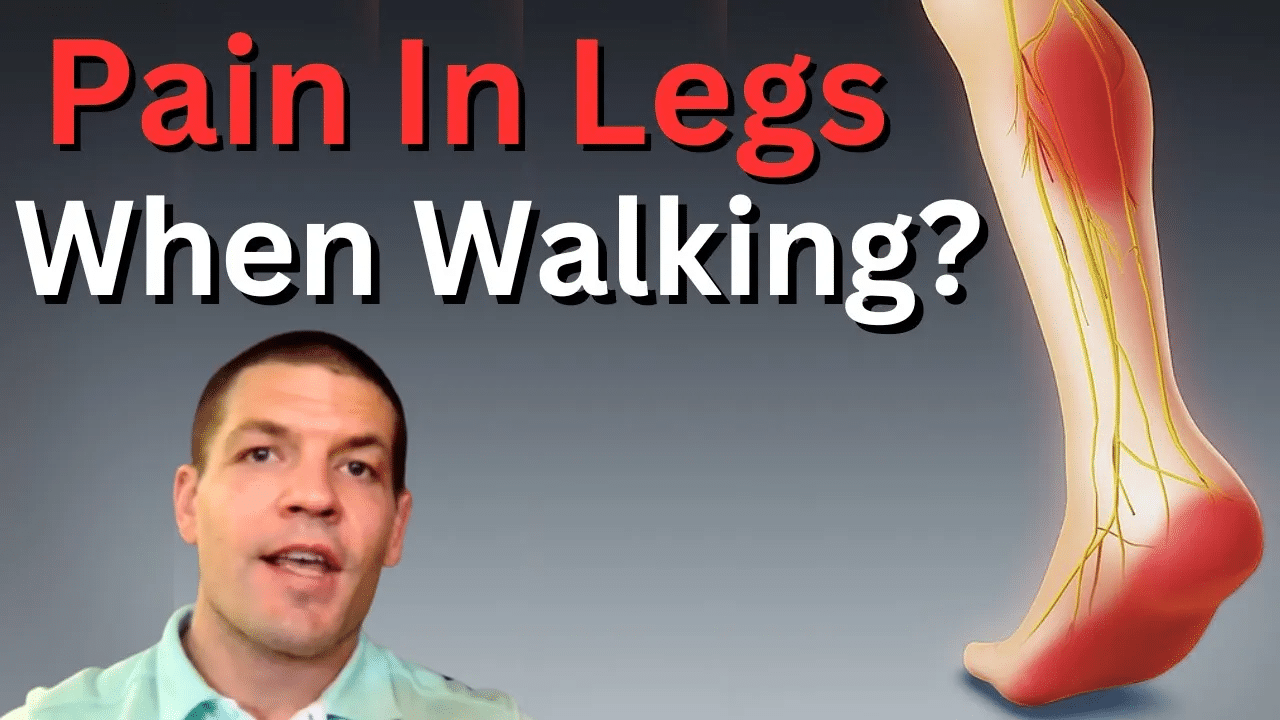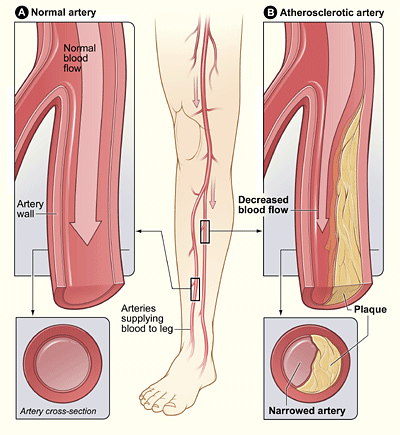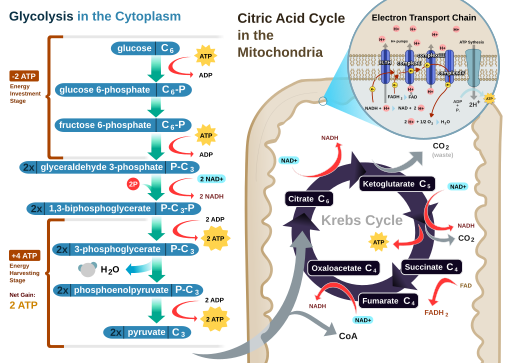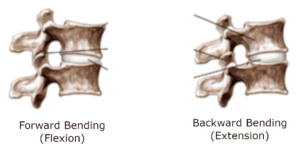Do Your Legs Hurt When Walking?
If you get cramping or burning pain in your legs when walking, or your legs get so fatigued that you feel like you just can't continue walking, make sure to watch the video below.
You'll learn common causes of pain in legs when walking, plus tips that you can use to help each of them so that you can walk longer without leg pain.

What Causes Pain In Legs When Walking?
There are lots of different things that can cause leg pain when you're walking, but there are two really common ones.
Both of these conditions can cause leg burning or cramping pain in your legs when walking.
Or your legs may just feel really fatigued to the point where you feel like you have to sit down after you've been walking. Depending on how severe the problem has gotten, it may even be only a short period of time before these symptoms start to come on.
And, when you sit down, the pain often goes away rather quickly.
That's referred to as intermittent claudication.
What Is Intermittent Claudication?
Intermittent claudication is when your legs get tired or painful after walking.
It's called intermittent because it's not there all the time. It's only there when you exert yourself. Then when you sit down, it goes away.
The most common cause of intermittent claudication you'll see on the internet is peripheral artery disease.
That's one type of intermittent claudication. However there's another type as well.
Peripheral artery disease is referred to as vascular claudication because it has to do with a problem with your blood vessels.
But there's another type called neurogenic claudication, which has to do with pinched nerves causing pain in your legs when you're walking.
The most common causes of neurogenic claudication are from back problems, such as spinal stenosis.
In spinal stenosis, the space around your spinal cord or nerve roots starts to narrow.
This in turn can cause pain, fatigue, burning, numbness or tingling in your legs when you're walking.
So I'm going to first start with the vascular claudication or peripheral artery disease (PAD).
Then I'll describe the symptoms of neurogenic claudication or spinal stenosis.
Finally, I'll describe how to tell the difference between the two, and some tips you can use to help you be able to stand and walk for longer periods of time.
Why Does Peripheral Artery Disease (PAD) Cause Pain In Legs When Walking?
First of all, let's start with peripheral artery disease, which is a problem with your blood vessels.
Either they're narrow due to cholesterol buildup, or you may smoke and your vessels have gotten harder and they don't expand as easily (atherosclerosis).
Something is impairing the flow of blood from your heart down to your leg muscles.
How Your Legs Get Energy
When you walk or exercise, your leg muscles need energy to propel you forward. They get energy by turning glucose or sugar into energy through a process called glycolysis.
Glycolysis happens when you turn sugar into energy. Durnig that process, one molecule of sugar or glucose turns into two molecules of pyruvate. This produces a net of two molecules of ATP, which your muscles use to contract.
That process is rather inefficient but can happen without oxygen.
But when you have oxygen, those two pyruvate molecules go through something called the Krebs cycle and the electron transport chain.
That's where the biology and the biochemistry gets extremely complex.
However, all you need to know is that the net of that produces 34 to 36 molecules of ATP.
Taking into account the the additional two molecules of ATP from glycolysis the total net is 36 to 38 molecules of ATP per one molecule of glucose.
If you go back to the original glycolysis that produces only two molecules of ATP. It also produces lactic acid acid as a byproduct.
Lactic acid is the thing that you feel when you've had a hard workout when you "feel the burn".
When you don't have oxygen you create one molecule of lactic acid for each molecule of glucose that you make. That creates a huge buildup of lactic acid in your muscles.
Eventually you you may feel a burning pain in your legs when walking.
Your muscles will also run out of energy more quickly. They may end up cramping or getting fatigued to the point where you have to stop walking.
However, when you stop and rest, and you stop the oxygen demand of your muscles.
So they don't require as much oxygen anymore, then the pain goes away.
How long does it take for the pain to go away?
Usually, it goes away pretty quickly. However, the greater the oxygen deficit that you've built up, the longer it takes for the pain to go away.
For example, if your legs started to hurt but then you continued walking until the point where you absolutely couldn't go on any longer and had to sit down, then it's going to take relatively longer than if you sat down as soon as you started to feel that burning or that cramping in your legs.
Why Does Spinal Stenosis Cause Pain In Legs When Walking?
Spinal stenosis can also cause burning or cramping pain in your legs when you're walking.
Spinal stenosis has to do more with the pinching of the nerves in your back when you're walking.
That happens because of narrowing of the spaces where the nerves to your legs exit your spine.
When you're in an upright position, particularly in a backward bending position, that narrows those spaces even further.
And that can happen when you're standing for long periods of time, as well as when you're walking.
When you've been upright for too long, it pinches the nerves that go down into your legs. That can cause pain, burning, cramping, tingling, or numbness in your legs.
When you sit down, that opens up the spaces where the nerves come out in your back. Usually, the pain goes away shortly afterwards.
What's The Difference Between Peripheral Artery Disease vs Spinal Stenosis?
Now, how do you tell the difference between the peripheral artery disease pain in your legs when you're walking and the spinal stenosis pain in your legs when you're walking?
Well, there are a couple of different ways that you can do that.
Spinal stenosis pain is more related to the position of your spine.
If you're just standing upright and not moving, you're not really exerting yourself. Therefore, you're not creating an oxygen deficit. Thus, peripheral artery disease won't cause a lot of pain if you're standing still, whereas spinal stenosis more than likely will.
Additionally, if you're walking and you start to feel the pain and you bend forwards, for example leaning over on a walker or a grocery cart, that will relieve the pain from spinal stenosis because you're changing the position of your spine.
If you continue walking, you're still exerting yourself though. So, if bending over while you're walking relieves your pain, then that's more than likely a spinal stenosis cause because you're still creating exertion and an oxygen demand, making it less likely to be peripheral artery disease.
Is There A Test For Peripheral Artery Disease?
There are other tests that you can use to definitively define if you have peripheral artery disease. The gold standard test is called an ankle brachial index.
In this test, you have your blood pressure taken at your ankle as well as in your upper arm (brachium) where you normally take a blood pressure.
Under normal conditions, those should be rather close to the same. So, the ratio of one to the other (ankle to brachial) should be close to 1. If it's less than 0.9, meaning that your ankle blood pressure is less than your arm blood pressure, then that's a good indication of vascular cause of claudication such as peripheral artery disease.
Most of the time though, if you use the other tests that I mentioned to you earlier, you can often tell the difference between peripheral artery disease vs spinal stenosis without needing to go to the doctor. If you've already ruled out spinal stenosis of it using those other tests and you want to confirm a diagnosis of peripheral artery disease, then seeking out an ankle brachial index test might be a good idea.
Treatment For Pain In Legs From Peripheral Artery Disease
So, what do you do if you have pain in your legs when you're walking?
Well, as you might guess, the treatment depends on what's causing the pain in your legs - whether it's from peripheral artery disease or spinal stenosis.
In the case of peripheral artery disease, because that's a vascular problem, you need to address general lifestyle factors.
For example, if you smoke, cutting down or ideally stopping smoking altogether is a good idea.
Watching the saturated fat and the cholesterol in your diet can also help prevent buildup of plaques in your arteries.
Additionally, even though walking or physical exertion is painful, you do want to improve your cardiovascular health. That means basically graded activity.
Walk or exercise up to the point where you start to have symptoms. As soon as you start to have symptoms, you sit down and rest until the symptoms go away. Then you go for another bout.
By doing that over time, you should be able to go for longer and longer periods of time before you have to rest.
In severe cases of peripheral artery disease you may need a blood pressure medication or cholesterol medication. Occasionally, in very severe cases, some sort of vascular surgery may be necessary if your vessels have become severely clogged with no alternative route.
Be sure to consult with your doctor regarding the need for medication and surgical options. However, its a good idea to implement the lifestyle factors above regardless of whether you need these interventions.
Treatment For Pain in Legs When Walking Due To Spinal Stenosis
As I mentioned earlier, leaning forward while walking, whether by leaning on a walker, the handles of a treadmill, or even walking or exercising in water, can be beneficial.
This unloads your spine and reduces pressure on the nerve roots in your back.
Using an exercise bike, particularly a recumbent bike, is also effective for spinal stenosis. Engaging in specific exercises and maintaining proper posture can help open up the spaces in your lower back, which usually involves forward bending positions. Contrary to popular belief, standing upright is not ideal for spinal stenosis. Leaning forward positions are typically better for managing the condition.
Learn more about how to manage walking problems from spinal stenosis in this post.
Need Help For Pain In Legs When Walking?
If you need help for pain in your legs when walking, we'd be happy to help you here at More 4 Life. We'll help you figure out what factors are contributing to the pain in your legs, as well as what you can do to walk more comfortably. Just tap the button below to request an appointment with one of our specialists.







